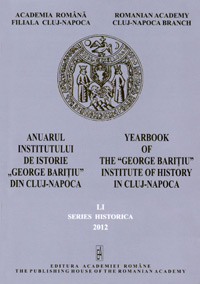
Keywords: Transylvania; Romanians; Religious Union; historiographical disputes
For over ten years, Pro Oriente Foundation in Vienna included among its historical research projects the issue of the Religious Union of the Romanians from Transylvania with the Church of Rome. This initiative belonged to Professor Ernst Christoph Suttner and it was extremely important because, as it is known, Religious Union of the Romanians with the Church of Rome gave rise to a strong and long controversy between historians and theologians in Romania, according to their religious affiliation. Until today, it was not formulated a common historical point of vue on this issue and, therefore, Pro Oriente Foundation proposed to organize some conferences and to publish several volumes which brings together common opinions tied to this topic, belonging to Romanian Orthodox and Greek-Catholic specialists. Several historians and theologians from abroad were to rule on the subject. This study presents only one of the many aspects concerning the Religious Union that Pro Oriente Foundation has investigated in recent years, namely whether the first Greek Catholic Bishop of Transylvania was or not invested again as a bishop in the first stage of Religious Union by its new Catholics prelats from Hungary and Austria, when after, early in his career, was appointed in Bucharest as Transylvanian Orthodox bishop by the hierarchy of the Orthodox Church. As it is shown in this study, the problem is difficult to be clarified even by the recent researches, due to the lack of the archival documents and because of powerful historical and political sensitivities that Religious Union continues to generate.
More...Keywords: word-by-word translation; free translation method; original meaning; language scholars; translators; sparkling civilization; FIT (International Federation of Translators)
Translation is a science and a profession that has a long history. According to the Bible at the dawn of human civilization all people spoke one language but when the God got angry with people he mixed their languages in such a way that they couldn’t understand each other. And since that time the need in interpretation and translation appeared. With the development of human society the art of translation has developed as well. Many writers who know foreign languages are good translators. Translation defined as “the rendering from one language into another” illuminates both the cultural otherness at stake in contemporary studies of nationhood and the epistemological otherness at work in language itself. It requires attention to cultural values, to economic and political inequalities, to individual choices, and to otherness in its linguistic and cultural forms. The effort to render one language system into another requires a keen awareness of broad cultural as well as specific linguistic values. The present paper proposes to provide readers with some information about the beginning of translation activities in schools of translation, which were founded in China, India, Baghdad, and Toledo. Translators opened all the ancient arts and sciences to the world not only philosophy, astronomy, and geometry, but also mathematics, medicine, optics, alchemy, and astrology. As Giordano Bruno himself would say: “From translation all science had its off-spring”. The patron saint of translators throughout the world is considered to be St. Jerome, the bible translator, therefore the International Translation Day is celebrated on 30 September, St. Jerome’s Day.
More...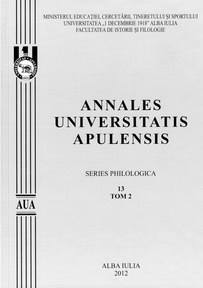
Keywords: Romanian women; journalism; literature; culture; patriotism
In Romania, the beginning of journalism is a head note of the 19th century. Women had a weightily part. They also helped appreciably their nation to synchronize with the European standards and goals of the 19th century. The country had to accomplish several major assignments in the political, social and cultural fields and women were perfectly empathetic. Most of them practiced journalism or they were the first female Romanian writers. Those, living in Transylvania which was part of Austro-Hungarian Empire (1867-1918), were strongly influenced by the modern views, ideologies and perspectives, and they disclosed the new perspectives for their peers from Moldavia and Muntenia. The present contribution highlights the first and most important Romanian writers-women who shaped the new position of their country in Europe and their position as well. Women went a long way towards equality, freedom, emancipation and an upper social eminence. Besides their actions and activities, the paper dignifies the stylistic and general literary qualities of their artistic outcomes.
More...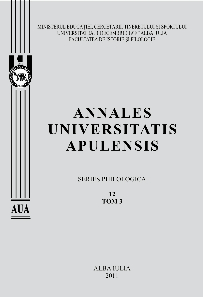
Keywords: ESP; professional communication; problems and difficulties
Nowadays teaching English for Specific Purposes has become a priority in most technical universities. The technical faculties require their students to study a course in a foreign language. Most students choose English, and their choice is a legitimate one. The term “specific” in ESP refers to the specific purpose for learning English. Today English is used by the specialists from different countries both to exchange information and experience and to communicate. ESP is oriented towards mastering skills for professional communication. English for Specific Purposes courses combine subject matter and English language teaching. This helps students to apply what they learn during the ESP courses to their own field of study, whether it be electronics and telecommunications, computer science, or mechanics, etc. The aim of our paper is to present some of the problems and difficulties the ESP teacher has to face during the teaching process. The first year students in our university have foreign languages on the curricula as an obligatory subject (discipline) 2 hours per week. The number of the students in the group varies between 30 and 50, and their level of language is different. Consequently it is the teacher’s responsibility to establish what to teach and how to teach a foreign language according to the objective professional needs of the future specialists. In addition to master a foreign language needs time and maybe the limited period of ESP courses makes some of the students lose interest in learning foreign language.
More...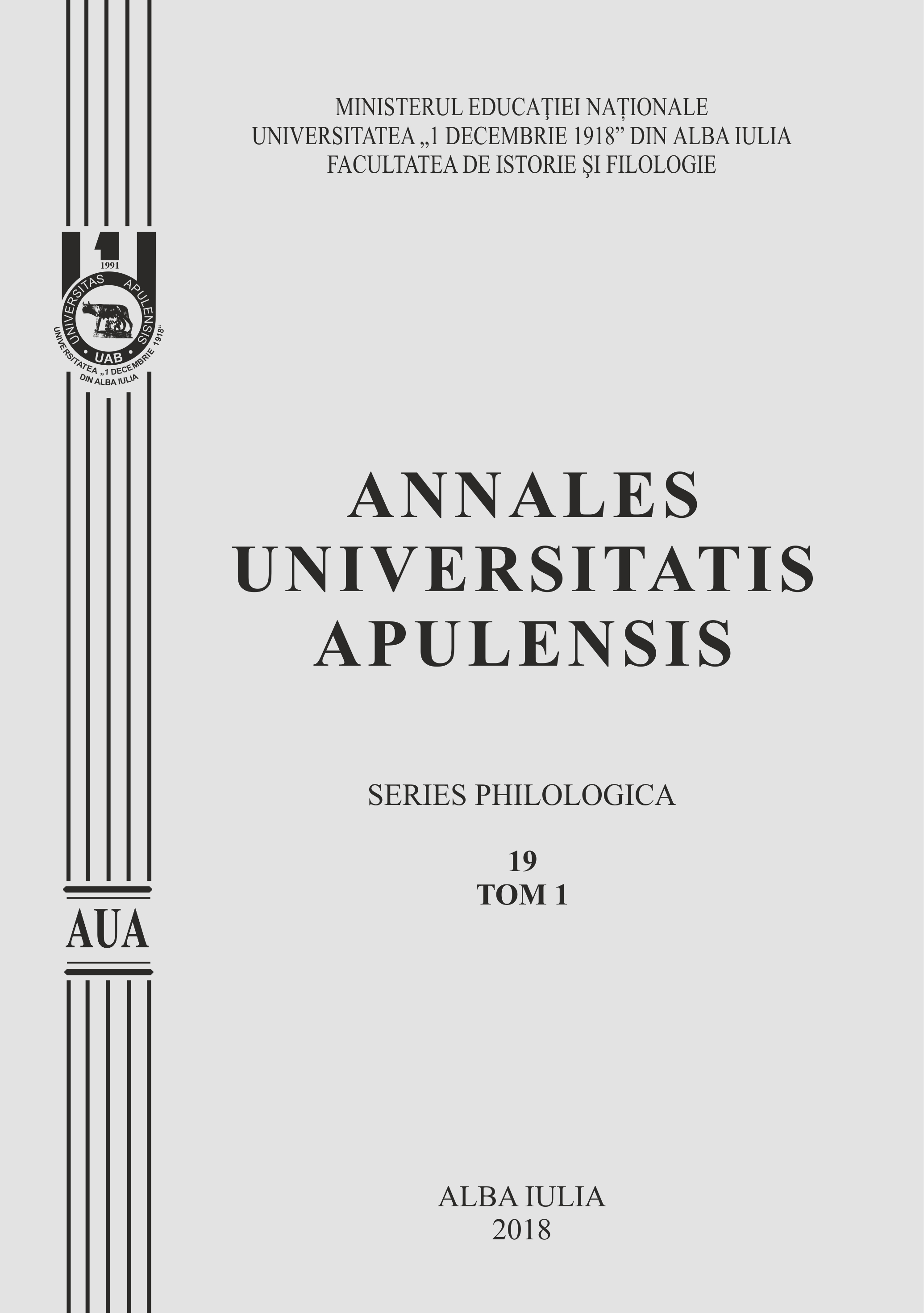
Keywords: conceptual metaphors; cognitive metaphor theory; pre-service teachers; teaching; teacher's roles;
According to conceptual metaphor theory, metaphors are much more than stylistic devices, they are view as basic elements of thinking. Common presences in our every-day language, metaphors "we live by" (Lakoff & Johnson, 1980/2008) shape our perception and understanding of the physical and social world, give sense to facts and events, structure personal experience and collective knowledge, guide actions, sometimes even without noticing them. Metaphors are present in didactic discourse and in discourse about education as well, shaping the way educational actors - students, teachers, parents, policy makers - conceptualize the learning and teaching process, teachers' roles, classroom interactions. Metaphors "we teach by" (Badley & Brummelen, 2012) "shape what we do in classrooms" (idem) and can be useful tools to investigate teachers' explicit and implicit beliefs and expectations. This paper presents an analysis of pre-service teachers' metaphoric representations about the teaching process, with the aim to investigate the way they conceptualize their roles in the classroom. The study sample includes 114 pre-service teachers, selected on a voluntary participation basis from the students enrolled in the Teacher Training Program at the University of Alba Iulia. The results are discussed in relation to their potential relevance for optimizing training, motivation, job satisfaction and teaching practice of future teachers.
More...
Keywords: methodology of bilingual teaching; French-Romanian pattern; comparative analysis; syntax and translation; Time clause;
We present in this article a method of Time Clause teaching through bilingual French-Romanian comparative analysis. Since the entire acquisition process is a complex and vast one and can not be fully comprised between the pages of a single article, we insisted on the phase of fixing the theoretical knowledge by observing and syntactically analyzing bilingual phrases and emphasizing in particular the identities and similarities between the two languages. This bilingual method is accessible to a wide range of students, to those who start learning French from a beginner level, but also to those with medium, advanced levels. It is addressed to groups of Romanian students who have already assimilated the basic knowledge of the Romanian language syntax envisaged as a course of study by the Romanian curricula and who will be able to use this basis as a benchmark in the acquisition of the foreign language.
More...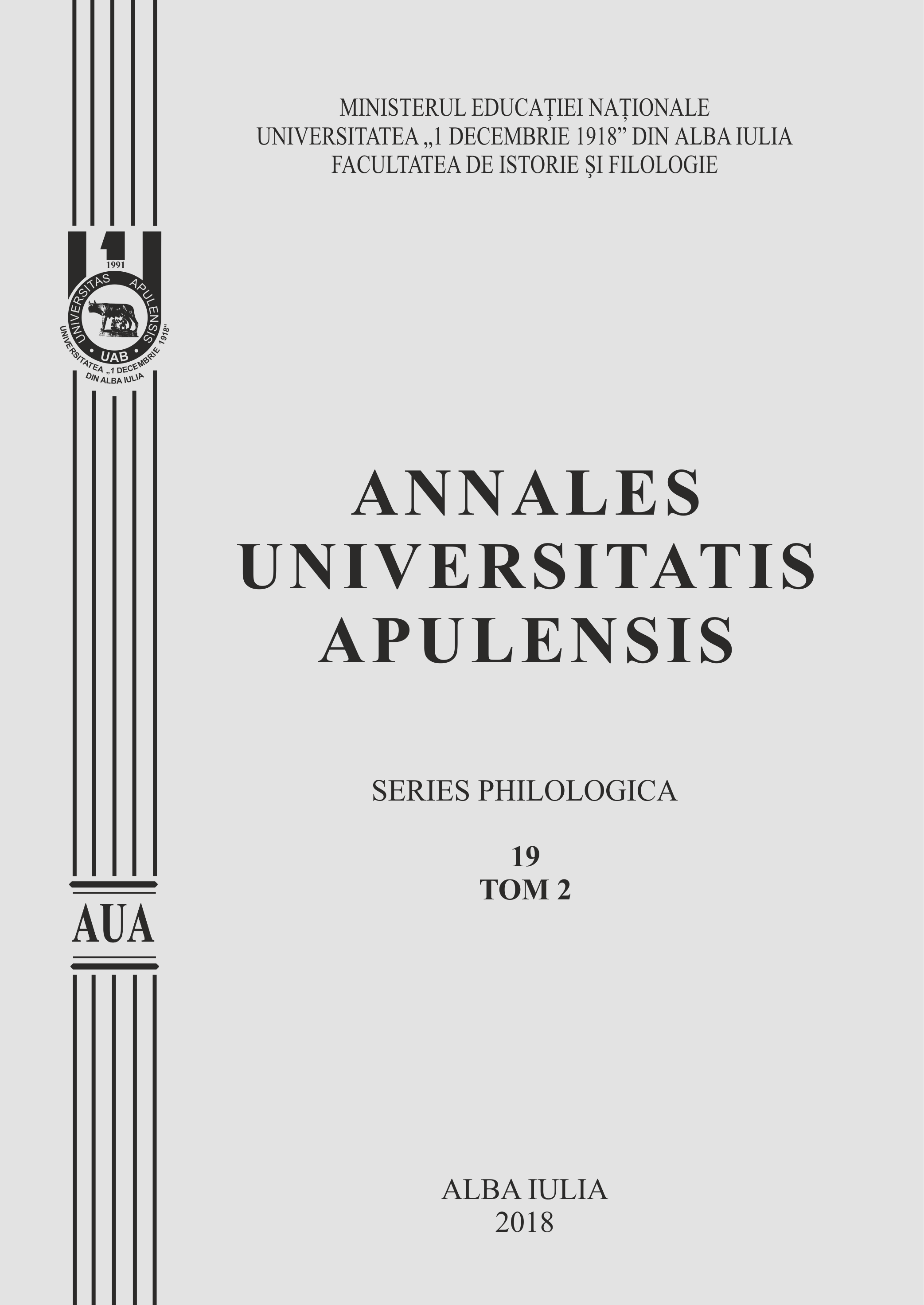
Keywords: diminutive; dictionary; suffix; epitaph; diachrony;
Having over 80 years of history, part of which concurred with the communist period, The Merry Cemetery from Săpânța (Maramureș) has always been a valuable source of heterogeneous language samples not fully explored to the present day. Following an inner intuition, the well-known artist, Stan Ioan Pătraș, together with his aides and the disciples who continued his work, tended to bring the epitaph writing art to a common pattern that would resemble more the original texts inscribed on the first crosses.Strongly influenced by the colloquial speech, the language we notice in these funeral texts sums-up numerous lexical forms, which are more or less respectful of the literary pattern. One can remark the derivative capacity Romanian language has if they pay attention to the diminutive suffixes used in epitaphs and which, not at all unusual for such type of texts, often do not correspond to the form patterns mentioned in dictionaries. We consider this study to be necessary and appropriate for providing a detailed, diachronic analysis of the way the diminutive forms got preserved or transformed within the Maramureș area, even more so since Săpânța is situated between other two villages with a Ukrainian and Hungarian-majority population, respectively.Our focus will be on establishing connections between the diminutive forms and the persons to whom the epitaphs were dedicated, based on the common knowledge that, in most of the cases, the author of the texts - who would also be the sculptor of the crosses - took up the habit of adapting his lexical approach to the peculiarities of every person he wrote about. Diminutive suffixes not only apply to the common nouns forming the basic vocabulary of the language, but they also influence anthroponyms and toponyms. Some of these forms have gradually lost their specific emotional or pejorative background and, sometimes, even the diminutive touch, cases we will not dwell upon in the present study but instead we will briefly mention.
More...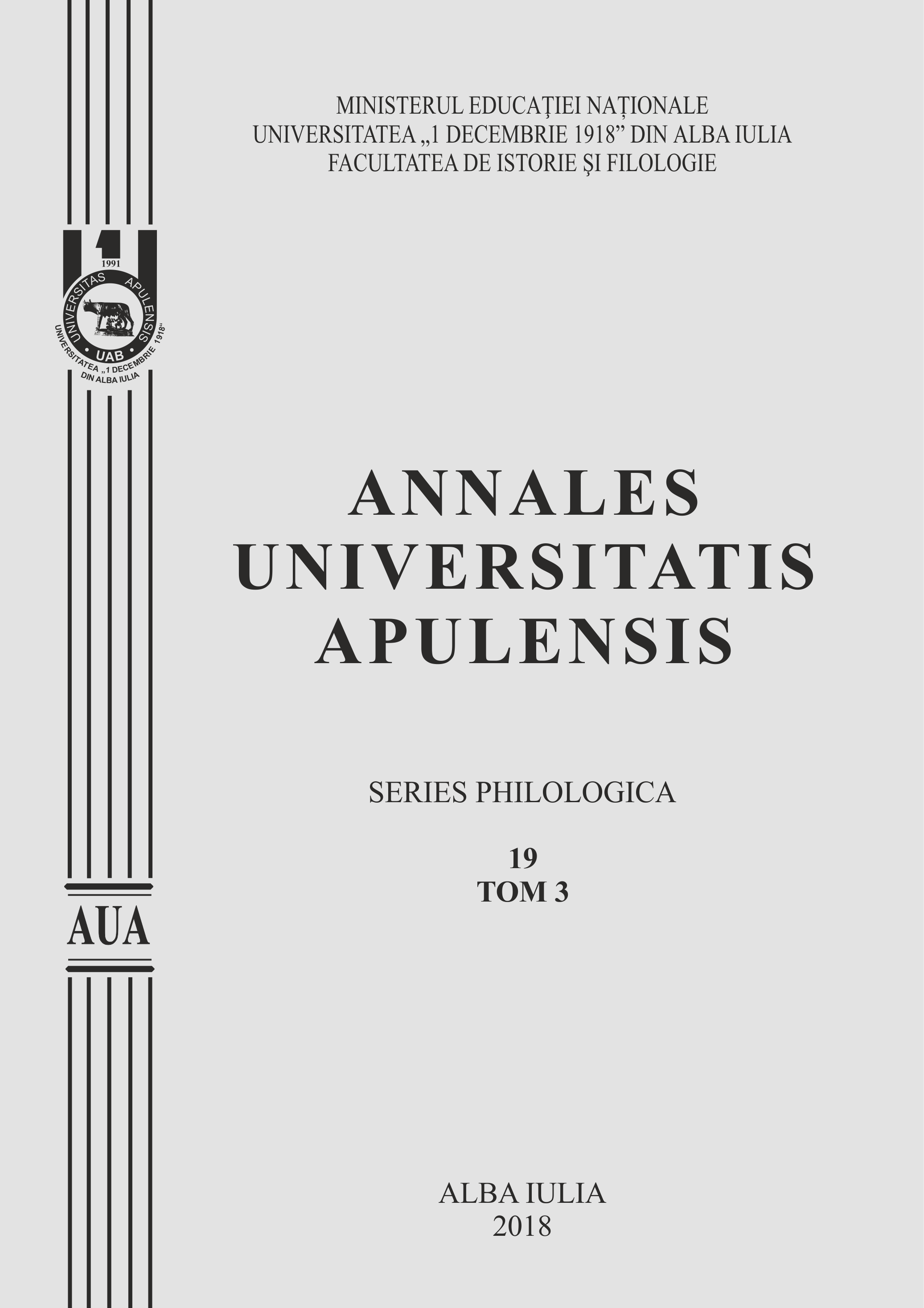
Keywords: criticism; theme; conscience; subjectivity;
The theme is a fundamental notion because it presents essential aspects of the literary work structure. Starting from the traditional view that the theme expresses an artistically transposed reality (the theme of love, death, heroism, etc.), we discover after that it is in fact a general scheme that lends itself to a multitude of interpretations. In the literary work, the themes form a complex network. Research in the field of thematic criticism are carried out in a series of disciplines such as: comparative literature, thematic, comparative thematic, modern poetics. These studies go from the remote origin of the theme, follow its evolution and come to analyze the originality of literary works. Comparative literature goes beyond linguistic boundaries. It proposes new analysis paths and allows for the creation of new analogies. Raymond Trousson broadly addresses the theme and myth, but does not make a clear demarcation between the two areas. He also tries to define the theme in relation to the literary motive, stating that the motive is a general framework, while the theme is the concrete expression. Pierre Albouy states that the theme is the set of images that cross the text. He speaks of a new interpretation of myths, which makes an appeal to sociology, psychoanalysis, the history of religions, etc. Marcel Raymond and Albert Béguin pave the way for '' thematic criticism '' or '' new criticism ''. Researchers who support this kind of criticism say that in order to get to know the author's vision and values, the critic must empathize with him. The new type of analysis will abandon the author's biography and didactic style. Georges Poulet shows that this type of critique recognizes the plurality of interpretations of the literary work, as well as the subjectivity of literary analysis. He says that the reader identifies himself with the author in the process of reading, his consciousness being temporarily replaced by the author’s consciousness. To identify recurring themes, the literary work needs to be read multiple times. Going into the depth of the text, the critic sees how the author's vision is configured. Jean-Pierre Richard shows that major themes in an opera are those that appear most often. Richard speaks of the transcendence of the theme, showing that the work reflects the meanings given by the literary tradition, but also brings new meanings. Gilbert Durand makes a connection between the themes of literature and the attributes of the legendary characters. He sees the themes both in relation to the characters and the recurring images. His analysis tools are based on anthropological data of the imaginary. Researcher S. Rimmon-Kenan defines the theme with the phrase '' what is talking about ''. He splits the themes in minor themes (which appear at the level of linguistic structures) and major themes (which appear at the speech level). He imagines the literary work as a tree with branches.
More...
Keywords: imaginary; French writings; aesthetic creation; penitentiary; torture; re-education;
The imaginary is an independent reality that has its own structures and its own dynamics, being closely related to the creative imagination. In order to reach the originality, the artist's imagination must deny the real, break the connections in which he presents himself to an ordinary perception, and try to propose other connections.Virgil Ierunca is a special case, an erudite intellectual, because of the vicissitudes of his agitated biography. Therefore, the imaginary of his writings is closely related to the social, political and cultural evolution of the time. As a writer, he was a great lover of French literature. He shows a very good knowledge of the French writings, which he read in the original, adopting the same principle formulated by George Călinescu, remainding us that it is important to know the work of a writer in the original.All the articles of the writer demonstrate the density, the erudition and the intense readings both from the Romanian writings and from the French literature. French debutants such as Thibaudet, Rémy de Gourmont, René Lalou, Edmont Jaloux and Paul Hazard are quoted in the debut articles. He is also inspired by the writings of Marcel Proust or Bergson. From this point starts the aesthetic creation of the famous critic Virgil Ierunca.The volume Piteşti Phenomenon, published in 1981, is based on radio texts written between 1975 and 1976 on the experience of torture rehabilitation at the Youth Penitentiary in Pitesti from December 1949 to August 1952. The idea of re-educationwith the help of prison is not only specific to communist regimes. In the USSR, this experience of the genocide of souls, of absolute violence directed against the body and soul, had already taken place through torture and obsession of confession, which characterizes the interrogations and trials of the 1930s. Also, the idea of re-education is also presented in the Stalinist regime, but it will occupy a more prominent place in China's Mao Tzedun, according to Jean Pasqualini author. There is a great similarity between Chinese-style re-education and Pitesti re-education, but in Romania all these things were unbelievable, because here the suicide of the personality meant that the prisoner had to be like others, to think like others and to dissappear in mass.The historian François Furet, a member of the French Academy, the one who carries the translation into the preface of the Pitesti Phenomenon, describes the book as "one of the most terrible experiences of dehumanization that our age has ever known." Unlike other writers, Virgil Ierunca had the courage to deal with this inferno called by some analysts the lab of the devil, and to become his historian for the clarification of future generations, according to him: "No one is allowed to forget that between 1949 and 1952, it happened in Romania the experience which we tried to describe, and that, from an archipelago of horror, one of the most odious islands was called Pitesti. "Thus, Virgil Ierunca judged the unfortunate world of communism and preserved its free and non-neodogmatic spirit. The book has helped us to find our dignity and honor as Professor Mircea Popa declares: "Such a book was absolutely necessary, because without memory, a nation and a literature can not find itself."
More...
Keywords: diminutives; internet; semantics; literal meaning; figurative meaning;
Along other Romance languages, Romanian contains an impressive amount of diminutives, and the language used on the internet makes no exception. In the present case study defined by an intense practical tendency, we are interested in some diminutives gathered from online conversations. As the title of our paper suggests, the focus will be upon diminutives with two meanings, a literal one, and a figurative one. In our approach, we will analyze each diminutive, trying to identify the etymology of its base (the word that generated the diminutive), the meanings is used with, along with the appropriate contexts, and to give our subjective opinion on the role of the diminutives in those specific contexts. Our approach aims to illustrate the overwhelming linguistic creativity of the internet users.
More...
Keywords: Toponyms; anthroponyms; names; appellation; name-place transfer; Key appellation plan;
The Mutual Character of the Relationship Betveen Anthroponyms and Toponyms This article covers the relationship between anthroponyms and toponyms,namely the reverse situation,the connection between toponyms and anthroponyms, particularly those aspects that are at the origin of their creation and the manner in which they have become noticeable. Onomatology shows that there are names derived from toponyms, the so-called toponymic names ,as well as numerous toponyms created from people’s names, the so-called onomastic toponyms. We say that names are of toponymic origin if they connect the individual with the locality,region or country he/she comes from.There are anthroponyms that have turned into toponyms if their function has been changed,without other formal transformations, and anthroponyms that have turned into toponyms through transformations or associations of some kind.Certain toponyms fall into the first category if they derive from anthroponyms with or without the intermediation or involvemnet of the appellation plan. There are several mechanisms that enable this name-place transfer,among which are :direct conversion,the intermediation of the toponymic or appellation plan,the addition of suffixes and the association with other types of words.The types that are widely represented in the language are simple toponyms,those arising from conversion,and those which underwent an intermediate stage as the name of a group;among the compound toponyms,the best represented are those that include an anthroponym as a second word in the Genitive.
More...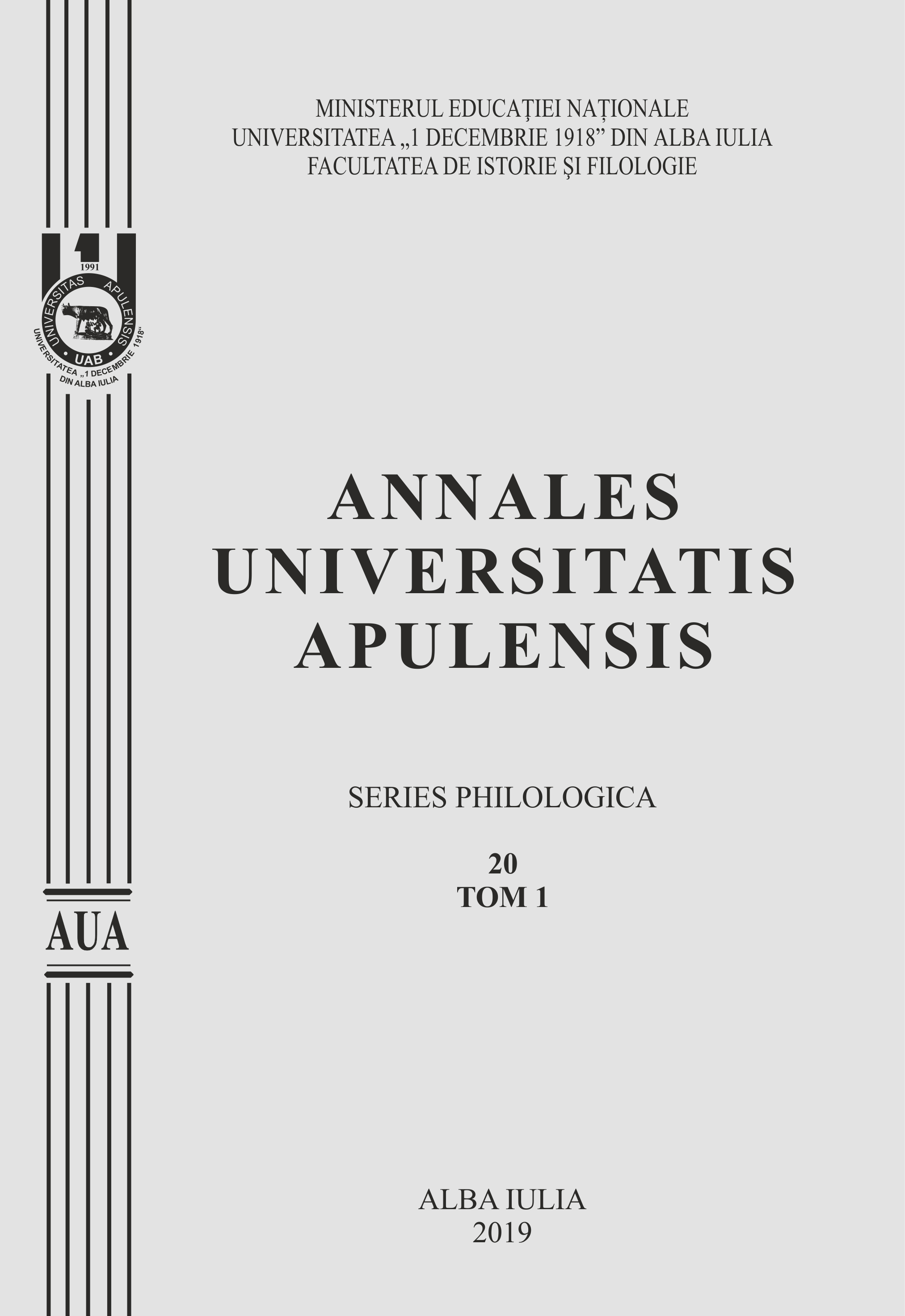
Keywords: linguistic atlases; speakers reactions; hesitations; corrections; meta-linguistic commentarys; pragmatic perspective; sociolinguistic perspective;
The study, based on the Romanian linguistic atlases, presents some aspects regarding the speakers reactions to the language facts, expressions of an active and conscious attitude. The paper follows linguistic phenomenon such as hesitations, corrections and meta-linguistic commentarys. This facts reflect the subjectivity of the language. The author consider that dialectal facts must be approched also from the pragmatic and sociolinguistic perspective.
More...
Keywords: psychanalyse; transfert; ambivalence; identification; idéal du moi;
Starting from a series of fundamental concepts of the psychoanalytic theory, we try, in this paper, to understand the manner in which they manifest themselves in a didactic context. It is about psychic principles that most often operate at an unconscious level. As a space for psychological elaboration, the didactic universe represents the scene on which a series of phenomena specific to the relations with the other can be observed, in general, and with the significant authority figures from the individual development, in particular.Starting from the Freudian concept of transference, we have shown that in the student-teacher relational dynamic, the former reproduces unconsciously a series of reactions / attitudes / patterns of behavior that he acquired at the early stages of his development by interacting with the representative figures from his life. We insist on the unconscious character of these manifestations, which affect the student and the teacher equally, the latter having the difficult task of identifying and managing a complex relational dynamic. Counter-transference represents, in its most current definition, the unconscious reaction of the teacher to the messages coming from those with whom he works, and ambivalence characterizes the coexistence of the positive and negative reactions, of love and hate, manifested by students in relation to the teacher, the methods and means used in the didactic act. The identification and the ego ideal are two other fundamental concepts whose understanding takes into account the way in which the students first refer to the teacher as a person, and then as a transmitter of specific academic knowledge. The psychoanalytic perspective that we propose in the analysis of the didactic context is able to highlight the importance of the student-teacher relation for the success of the educational approach.We believe that understanding the teaching-learning process from this perspective can enable the teacher to have a broad vision of his role by equally providing him with a range of tools useful in managing the problematic situations in which he will inevitably find himself at one moment. The psychoanalytic theory could be a starting point in developing a didactic of the unconscious, in which the role of the teacher would be that of a mediator / catalyst ensuring the access to knowledge for the students, and not of the principal actor on the educational stage. Undertaking this position would in no way mean a minimization of the role or merits involved in the teaching profession but a realistic and responsible adaptation to a professional context in which the teacher's fundamental task remains to serve the other and to open, with the means specific to the subject he teaches, the access to a specific type of academic knowledge, as well as towards a more complex vision of himself and of life in general.
More...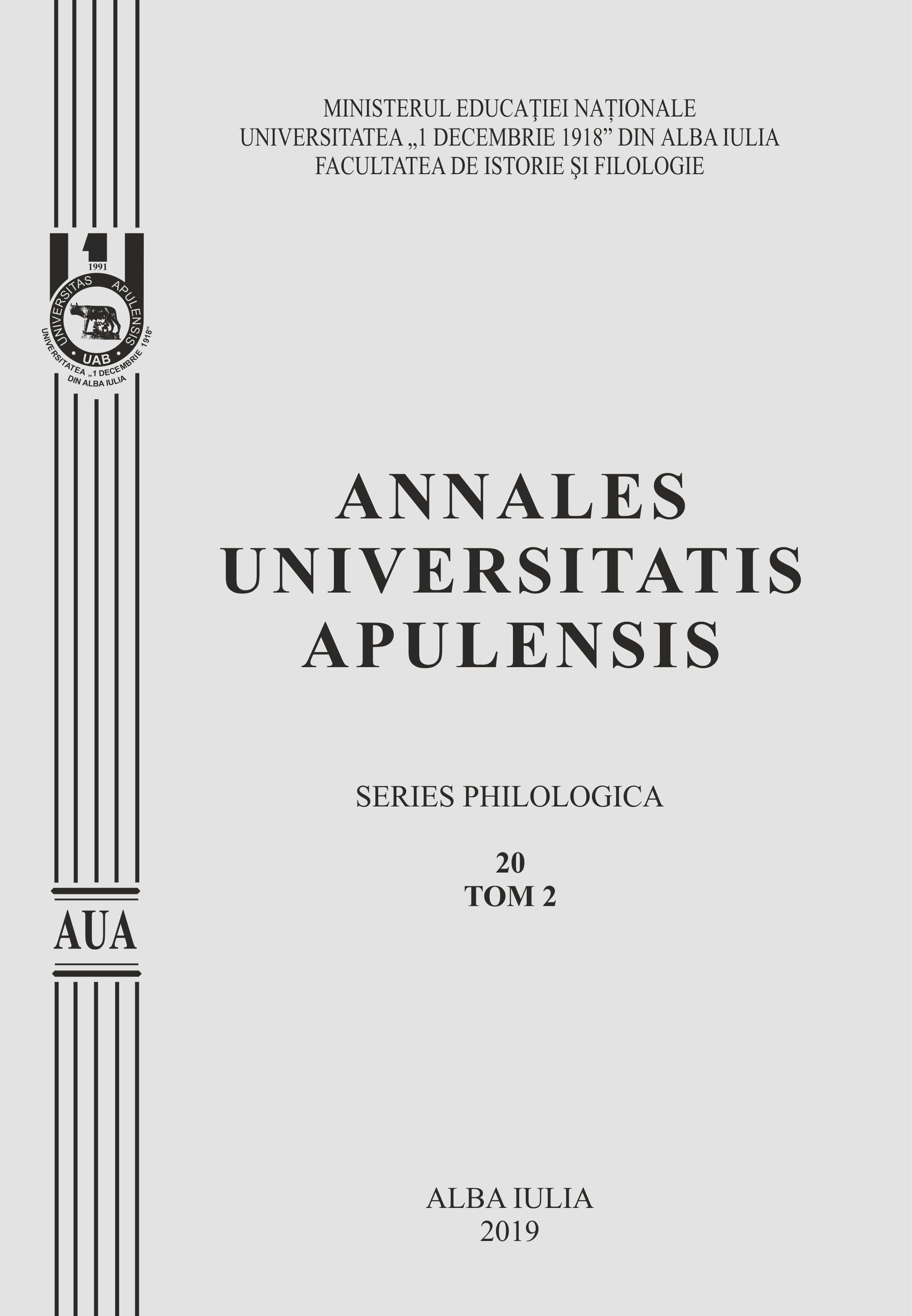
Keywords: oppressors; persecution; newspaper; militant; Romanian values;
Talented newsman, Emil Isac fought for the Romanian people, being at the forefront of newspapers of the time. Even during the period of Austro-Hungarian persecution, he defended Romanian values with great effort, he fought with count`s help to free the country from oppressor`s straps. This militant attitude was received with sympathy by the reading public, who loved him. Always being in the middle of the events, Emil Isac announced the irregularities of the Hungarian governments and denounced their discriminatory policy. Nothing that represented the actuality of the time, didn`t escape them from his careful observation.He is, therefore, the Cluj`s journalist who wanted a new Transylvania, a new Romania and a new Europe. His remarkable talent and his dedication to his Romanian people put him at the forefront press time.
More...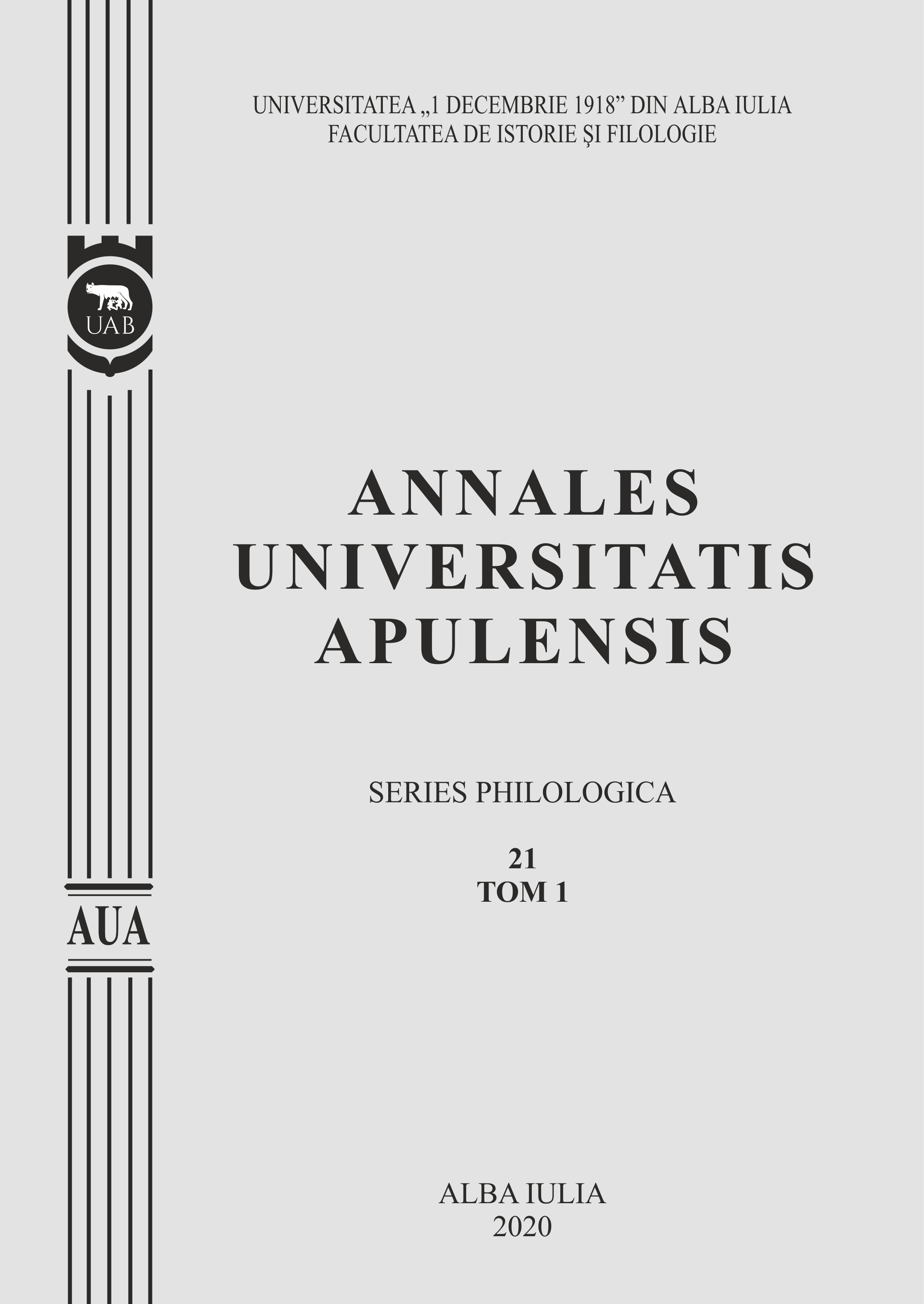
Keywords: autobiographie; fiction; autofiction; reality; obiectivity;
Autobiographical writing has a variety of aims, often illusory ones. Objectivity and exhaustiveness are just two of the most frequently pursued goals which are impossible to reach by their writers. The present article tackles the way Philippe Vilain re-enacts a love story in the novel L’Etreinte, in which his partner is the writer Annie Ernaux. The analysis is two-fold: on the one hand, we will review the author’s efforts to render the experience in the most complete, honest and objective manner possible; on the other hand, we will point out the limitations that writing, as a structuring element of reality, imposes. Love tension is doubled by that of the literary critic, Philippe Vilain. The author wishes to do equal justice to the intense experience he has gone through as well as to the objectivity he values as a literary theorist. Since he considers that any kind of ”economy” is a danger to the appropriate reception of the text by the reader, the writer recounts this autobiographical experience in a way that excludes any tinge of masculine or writerly vanity, revealing himselfin circumstances that favour vulnerability, authenticity, care and love for the other and the act of writing. Autobiographical writing, no matter how faithful to reality, cannot but eventually betray the latter. As an instance of inevitable autofiction, autobiography re-enacts the lived experience in a diffuse and approximate manner imposed by the subjectivity of memory and other psychical processes whose boundaries are impossible for us to cross. Closely observing the autobiographical pact as defined by Philippe Lejeune, Vilain firstly honours a pact that he seems to have made with himself and with his own consciousness: that of being honest with himself, with the others and with the act of writing. We cannot be completely faithful to reality given that any recapturing of the latter through writing brings about omissions, additions, re-interpretations which originate in the writer’s subjectivity. Although aware of this phenomenon, especially from the theorist’s perspective, Philippe Vilain seems to defy it with every page he writes. He understands that writing cannot aspire to capture reality or truth as they are, and that the latter often remain the prisoners and the trophy – a sad reward – of the lived experience with all the challenges it sets to us.
More...
Keywords: naturalism; I. L. Caragiale; B. Șt. Delavrancea; literary technique; symptomatology;
The naturalism has arrived in our literary space at the end of the 19th century, as many other literary and artistic movements, tendencies, or currents. Its disputed status implied a lot of polemics among the literary critics. Due to its rough manner in displaying the most unpleasant realities (such as the disease’s symptomatology, the poverty, the misery, the marginal society), naturalism has gained its partisans, but also its opponents. Of course, that the end of the 19th century represented a crucial moment for our artistic and literary space due to many new tendencies and ideas which populated our inner aesthetic directions. The naturalism movement represents an example in this context. Its controversial status comes from the fact that it was considered a literary current, but only a tendency, a movement. Many literary critics disputed its status due to a lack of consistency in its flow. But it was more about its aesthetic than its consistency. This paper aims to present some important aspects about Romanian naturalism, applied into a case study made upon Caragiale and Delavrancea’s short stories. These two authors experimented the naturalistic elements into their short stories, in undiscovered manners. The naturalistic bursts identified in their short stories are evidences that the naturalism was an important tendency among writers, despite its disputed status and place. The two writers selected for the case study are important and relevant figures into the 19th century’s literary context. Both adopted various literary formulas, from dramas to short stories. They are important for this paper’s aim because although they use the same literary techniques, ideas, tendencies, and movements, they propose different perspectives in their works. By presenting these different perspectives the paper aims to display the characteristics of the naturalism identified into our literary context. And although it was not manifested as a complete literary current, it was an important movement which convinced many writers and artists to become followers.
More...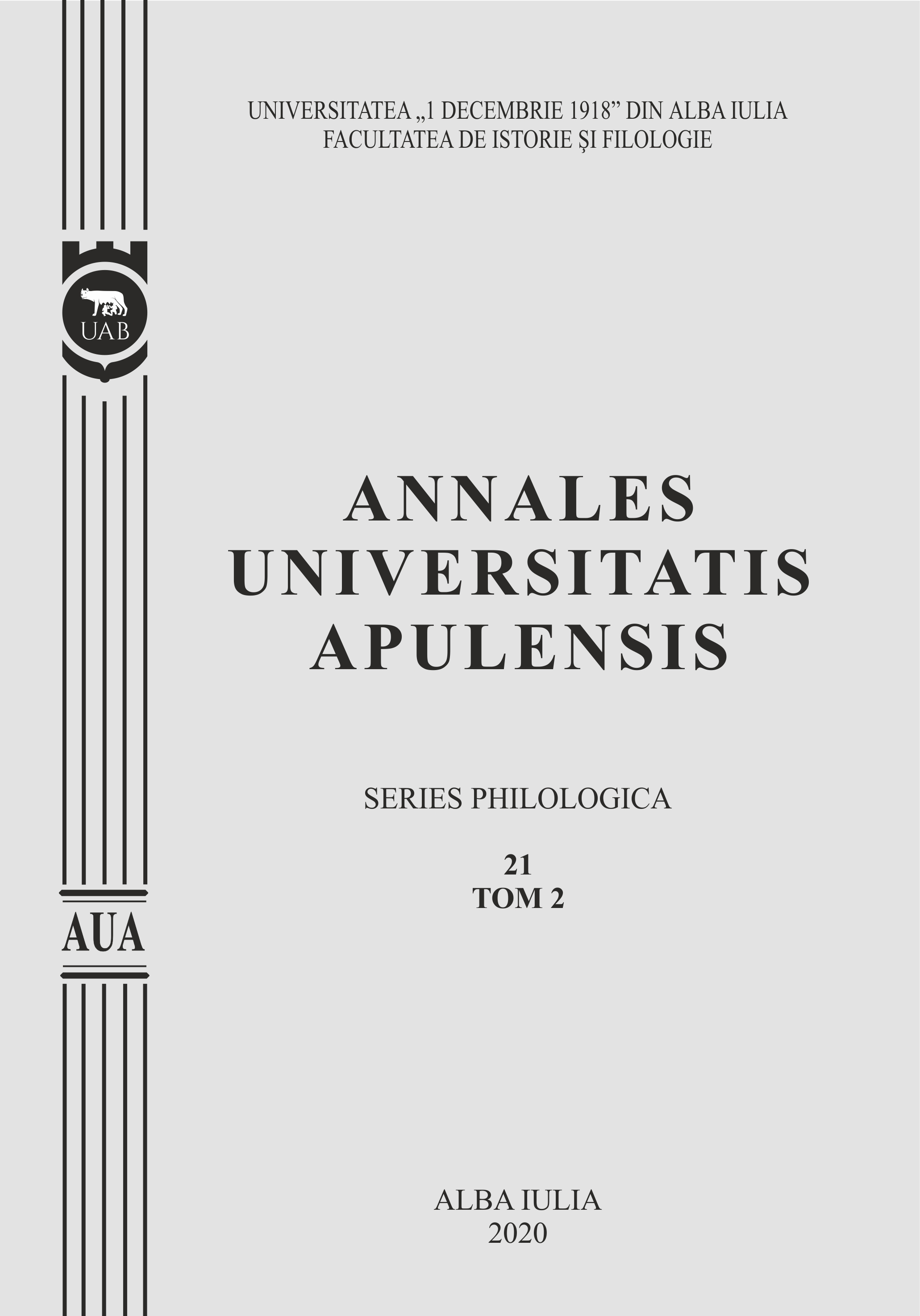
Keywords: Jews; community; Caransebeș; culture; traditions;
Religion, culture, traditions, language are part of the history of a community, they represent its values, which, if not known by future generations, are lost. The Jewish community in Caransebeș represents a landmark in the history of the city and, for this reason, in this paper we set out to present some of the defining aspects of Jews, regarding origin, culture, gastronomy, especially because many of them are no longer in their lives today. The Jews of Banat, especially those from Caransebeș, are fewer and fewer and we consider it important from a historical point of view (and not only) to know the past of a community that is part of the city.We tried to reveal certain aspects of the life of the Jews of Caransebes, starting from the idea that, by making them known, they will remain in the collective memory, because less and less customs have been preserved, and, in terms of lexicon, young Jews, the current generations, do not speak Yiddish, as their grandparents did, or know only a few words.
More...
Keywords: selfhatred; sociolinguistics; psycholinguistics; language; language abandon;
The notion of autoodi(selfhatred) details a very important phenomenon in the process of language abandonment, speech and the transmission of one's own language in dominated language groups. This self-hatred may be manifested at some point by members of a dominant group in relation to a dominant group with whom they are in contact. This sociolinguistic phenomenon is based on a psychological fact, that of a feeling of hostility even towards one's own group and the identification of the values of the dominant group with the very idea of good, beauty, power, which leads to the abandonment of language and values of the dominated community.The evolution of a language is, in addition to the intrinsic transformations it involves, also a social phenomenon, closely linked to major movements of this type. Of course, not every social change entails linguistic changes, just as not every linguistic change is based on a social phenomenon. Over time, the Romanian language has changed, enriched or simplified, depending on the realities and linguistic needs imposed by the era. However, these transformations did not have a strictly linguistic character, but they were, most of the time, in close connection with social phenomena that also led to specific attitudes of the speakers towards their own language.
More...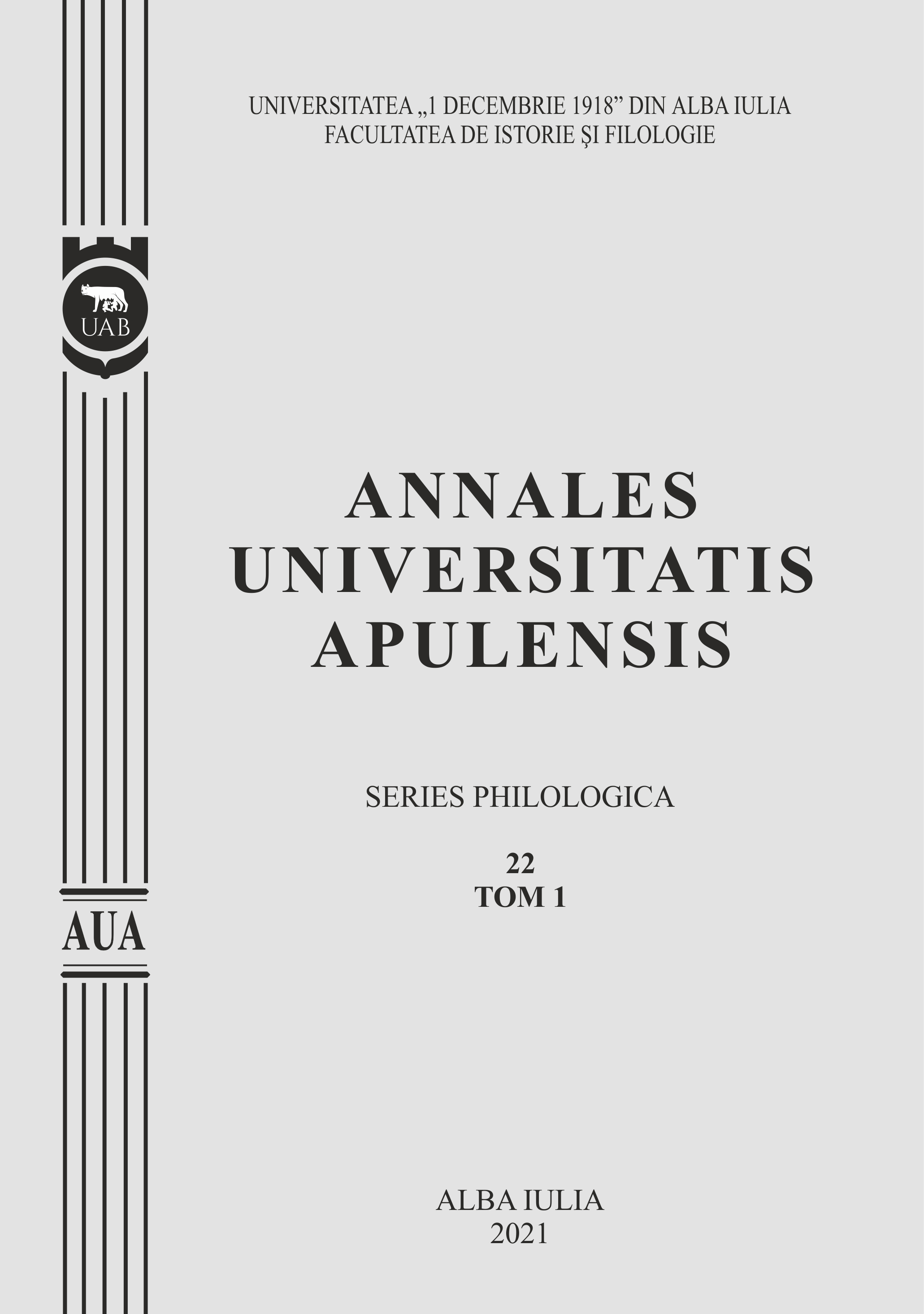
Keywords: Romanian language; vocabulary; dialectal words; microtexts; land of Hunedoara
In our intervention, we propose to discuss about some old dialectal words, identified in several microtexts integrated in a chrestomathy symbolically named Cuvinte mărturisitoare‘Shriven Words’,published twenty years ago. This volume accommodates within its pages a series of private notations found in a considerable number of cult books which have travelled in the South-West of Transylvania, more precisely in the lands of Hunedoara, located in the North and South of Mureş river. Beyond the fact that they represent testimonials of Romanians’ quotidian, social and religious life, the notations designed by erudite, priests or this world’s simple inhabitants consist of an important number of words which have travelled in days of yore and which present a great interest for linguists, considering that many are novel, and others depict older attestation than those registered in our main lexicographic papers. These particularities have determined us, furthermore, to emphasize them in this study.
More...